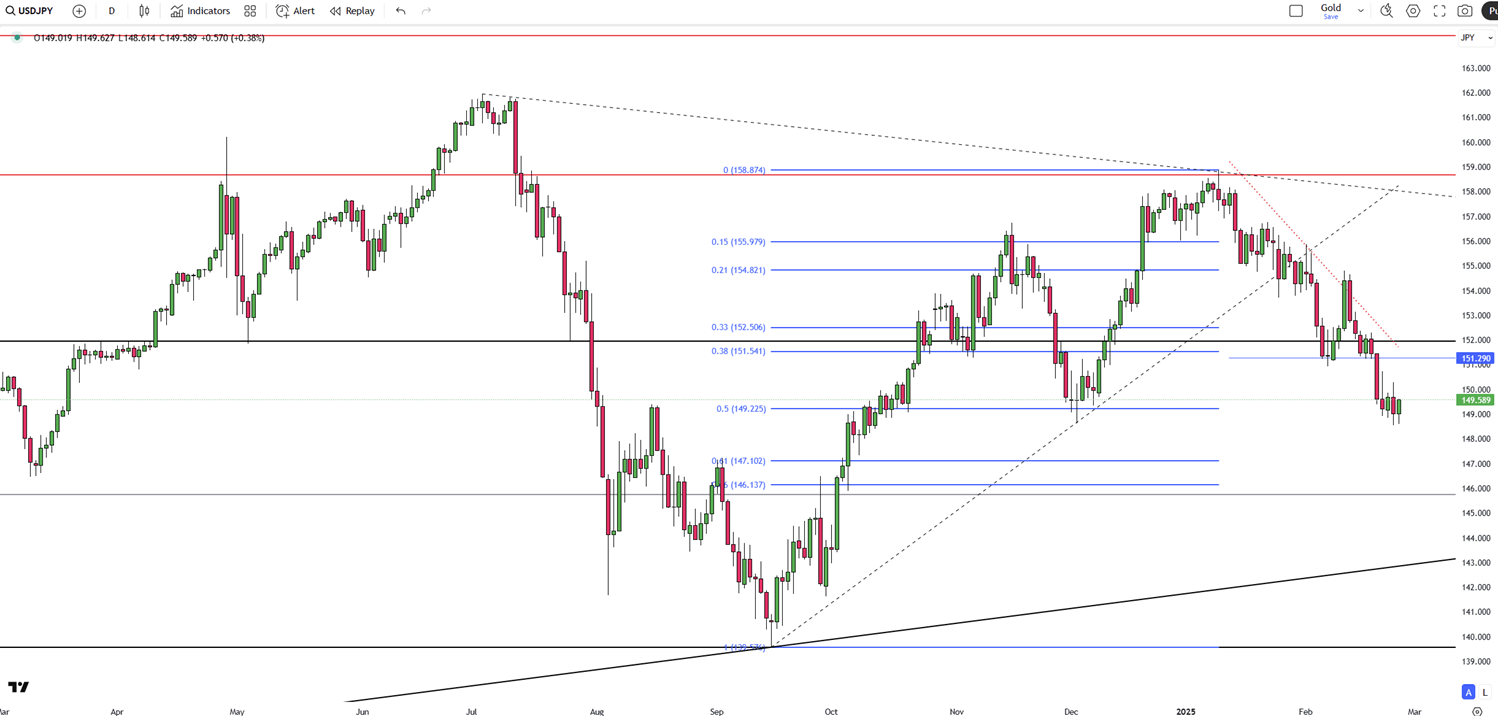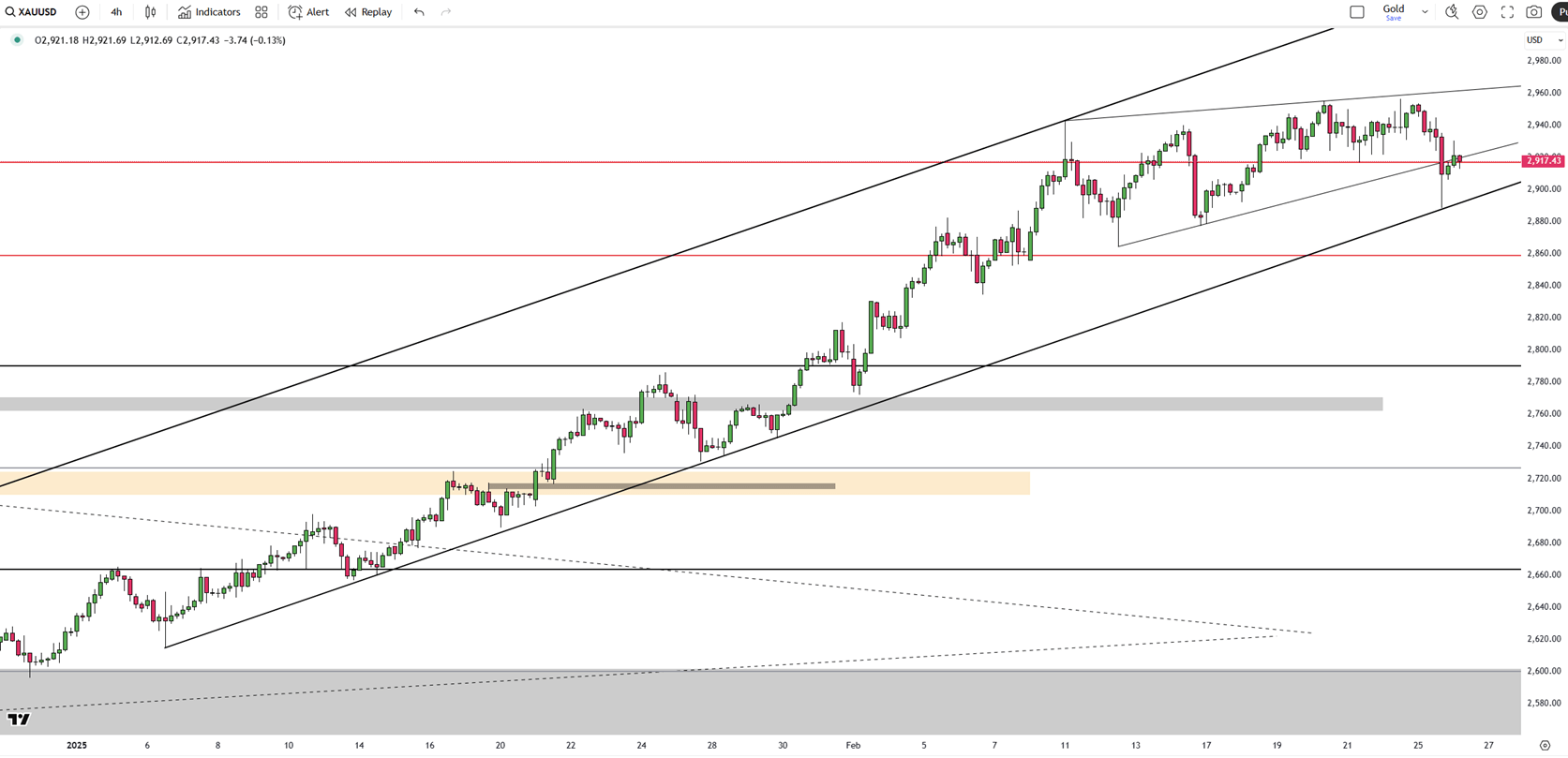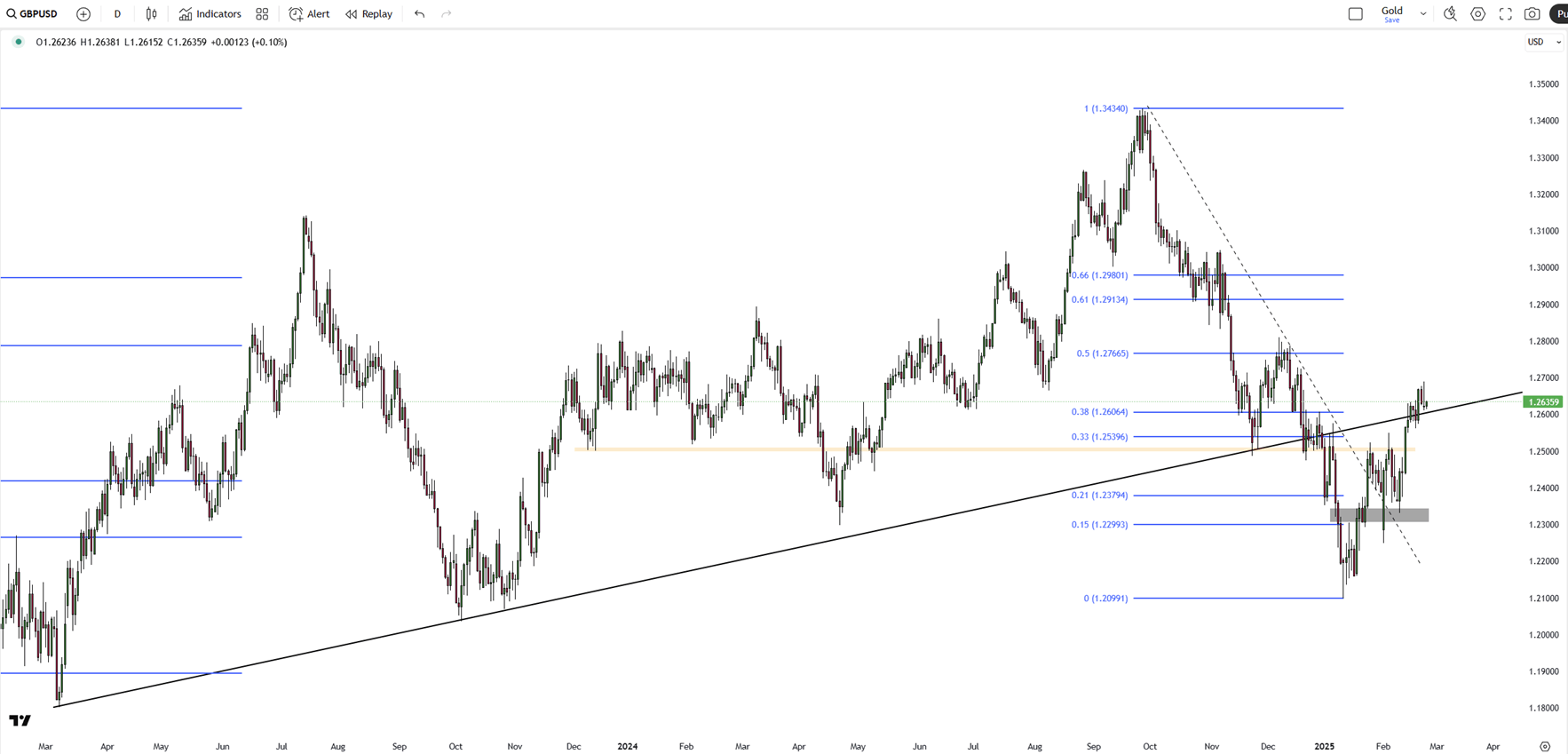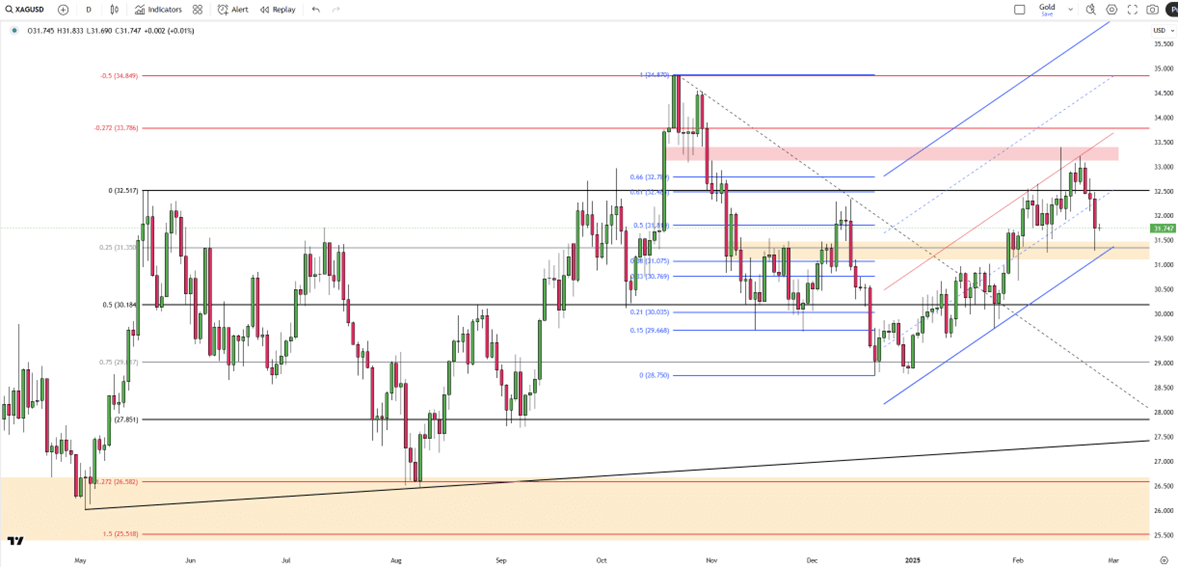The US Dollar strengthened as Treasury yields rose, weighing on EUR/USD, while weak US data reinforced the Fed’s cautious stance.
Gold steadied near $2,920 amid trade concerns, while the yen held firm on BOJ hike speculation. GBP/USD hovered near $1.2640 as BoE rate cut expectations grew, and silver extended losses ahead of key US inflation data.
| Time | Cur. | Event | Forecast | Previous |
| 15:00 | USD | Crude Oil Inventories | 2.340M | 4.633M |
| 15:00 | USD | New Home Sales (Jan) | 677K | 689K |

EUR/USD slipped to 1.0500 in Asian trading on Wednesday, retreating as the US Dollar strengthened amid rising Treasury yields.
The Dollar Index (#DXY) neared 106.50, with 2-year and 10-year US Treasury yields climbing to 4.12% and 4.32%, respectively. However, weak US data limited gains as consumer confidence fell for a third straight month to 98.3. Richmond Fed President Thomas Barkin forecasted a further PCE inflation decline, reinforcing the Fed’s cautious stance on policy adjustments.
In Europe, optimism over Germany's €200 billion defense fund and potential debt brake reforms supported the Euro. Meanwhile, ECB policymakers remain divided on rate cuts, with Joachim Nagel open to further easing if inflation trends lower, while Isabel Schnabel cautioned against premature reductions. The ECB meeting next week is expected to deliver a fifth consecutive rate cut.
Key resistance is at 1.0520, followed by 1.0600 and 1.0650. Support stands at 1.0450, with further levels at 1.0350 and 1.0275.
| R1: 1.0520 | S1: 1.0450 |
| R2: 1.0600 | S2: 1.0350 |
| R3: 1.0650 | S3: 1.0275 |

The Japanese yen eased to 149.5 per dollar on Wednesday, retreating from a 4.5-month high as the US dollar stayed firm amid Trump’s rising tariff threats. Trump ordered a probe into copper tariffs and confirmed tariffs on Canada and Mexico will proceed next week. Despite the pullback, the yen remained near multi-month highs on expectations that the Bank of Japan will continue raising rates after strong Q4 inflation data. Investors await key reports on Friday, including industrial production, retail sales, and Tokyo inflation, for further policy insights.
Key resistance is at 154.90, with further levels at 156.00 and 157.00. Support stands at 149.20, followed by 147.10 and 145.80.
| R1: 154.90 | S1: 149.20 |
| R2: 156.00 | S2: 147.10 |
| R3: 157.00 | S3: 145.80 |

Gold held near $2,920 per ounce on Wednesday after briefly hitting a one-week low as traders took profits. Despite this, demand remained strong amid uncertainty over Trump’s tariff policies.
On Tuesday, Trump ordered a review of copper tariffs after confirming import levies on Canada and Mexico, fueling safe-haven demand. ETFs saw their highest net inflows since 2022, further supporting gold.
Markets expect two Fed rate cuts this year, likely starting in July, as weak US data bolsters easing bets. However, inflation from Trump’s tariffs could still influence policy.
Meanwhile, China’s gold imports via Hong Kong fell 44.8% in January, the lowest since April 2022.
Key resistance stands at $2,949, with further levels at $2,975 and $3,000. Support is at $2,880, followed by $2,830 and $2,760.
| R1: 2949 | S1: 2880 |
| R2: 2975 | S2: 2830 |
| R3: 3000 | S3: 2760 |

The British pound traded near $1.2640 on Wednesday, just below a 10-week high, as BoE rate cut expectations grew.
BoE policymaker Swati Dhingra backed a larger half-point cut, citing weak consumer spending, cooling inflation, and a slowing labor market. Traders now price in 56 basis points of easing this year, with the first cut expected by June, possibly May, and a second likely by November.
Meanwhile, Trump confirmed tariffs on Mexico and Canada while pushing for stricter chip restrictions on China.
The first resistance level for the pair will be 1.2670. In the event of this level's breach, the next levels to watch would be 1.2720 and 1.2770. On the downside 1.2340 will be the first support level. 1.2265 and 1.2100 are the next levels to monitor if the first support level is breached.
| R1: 1.2670 | S1: 1.2340 |
| R2: 1.2720 | S2: 1.2265 |
| R3: 1.2770 | S3: 1.2100 |

Silver fell toward $31.5 per ounce, extending its drop from a three-month high of $33.39 on February 14, as demand uncertainty persisted amid US tariff concerns.
Investors awaited key economic data, including Friday’s January PCE Price Index, the Fed’s preferred inflation gauge, expected to rise 0.3% monthly and 2.4% annually (2.6% core).
Upcoming Fed speeches may offer more clues on future rate decisions.
Technically, the first resistance level will be 33.15 level. In case of this level’s breach, the next levels to watch would be 33.80 and 34.50. On the downside, 31.40 will be the first support level. 30.90 and 30.20 are the next levels to observe if the first support level is breached.
| R1: 33.15 | S1: 31.40 |
| R2: 33.80 | S2: 30.90 |
| R3: 34.50 | S3: 30.20 |
Global markets on Friday leaned cautiously constructive as traders positioned for a possible Fed rate cut next week, persistent tightness in precious metals, and rising expectations of a BOJ shift.
Detail Dovish Wave Lifts Metals as Yen Tightens (12.04.2025)Markets on Thursday leaned toward a dovish global outlook, lifting precious metals and reshaping major currency moves.
Detail Gold Climbs, Yen Recovers on Soft US Signals (12.03.2025)Rate-cut expectations overtook Wednesday trading.
DetailThen Join Our Telegram Channel and Subscribe Our Trading Signals Newsletter for Free!
Join Us On Telegram!